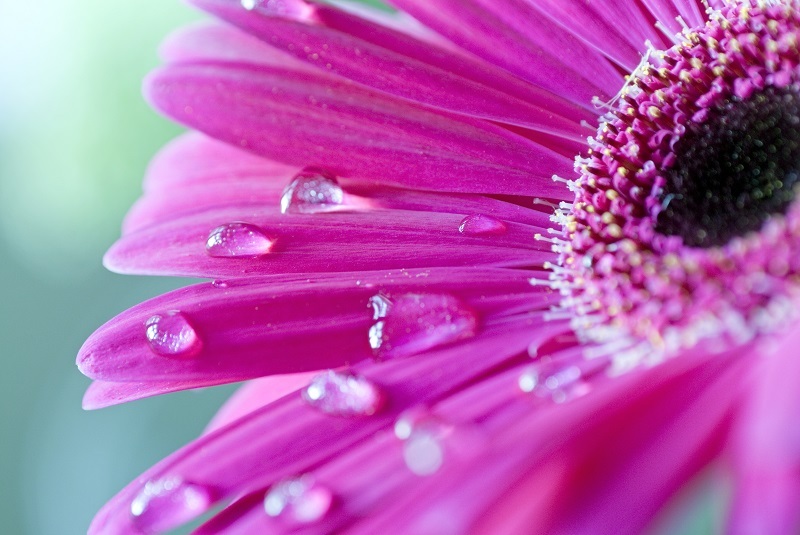Sustaining a Mold-Free Bathroom: Tips and Tricks
Posted on 19/08/2025
Sustaining a Mold-Free Bathroom: Tips and Tricks
Achieving and maintaining a mold-free bathroom is essential not just for your home's appearance but for the health and wellness of your family. Mold thrives in damp, poorly-ventilated spaces, making the bathroom one of its favorite places to grow. This in-depth guide provides practical tips and actionable advice on sustaining a mold-free bathroom environment for the long haul.

Why Is Bathroom Mold a Problem?
Mold is a type of fungus that spreads through spores and flourishes in moist, warm environments--exactly the conditions present in most bathrooms. While minor mildew may appear as small black spots on grout or caulking, unchecked mold infestations can lead to unpleasant odors, unsightly stains, and potential health risks, particularly for those with allergies or asthma. Additionally, mold can damage tiles, walls, ceilings, and woodwork--compromising your bathroom's integrity.
- Respiratory Concerns: Some mold species can trigger allergic reactions and asthma attacks.
- Structural Damage: Over time, mold can degrade wood, drywall, and grout.
- Persistent Odors: A musty smell signals underlying dampness or mold growth.
Main Causes of Mold in Bathrooms
Understanding the root causes of mold in bathrooms is vital for effective prevention. Here's why your bathroom often faces this pesky problem:
- Poor Ventilation: Without adequate airflow, steam lingers after showers or baths.
- Excess Humidity: Hot showers increase humidity and moisture in the air.
- Leaking Fixtures: Dripping faucets, pipes, or toilet bases keep surfaces damp.
- Ineffective Cleaning Habits: Failing to regularly clean or dry surfaces gives mold more to feed on.
Key Strategies to Keep Your Bathroom Mold-Free
1. Improve Bathroom Ventilation
One of the most effective measures for preventing mold in bathrooms is ensuring sufficient ventilation. Mold spores settle quickly in stagnant, moist air, so keeping air moving is crucial.
- Install or upgrade an exhaust fan: For optimal results, pick a fan that can adequately handle your bathroom's size and run it during and after each shower for at least 20-30 minutes.
- Open windows: If your bathroom has windows, open them after a bath or shower to let out steam and introduce fresh air.
- Use a dehumidifier: In humid climates, a compact dehumidifier in the bathroom can keep moisture levels in check.
2. Control Humidity and Moisture
High humidity is the number one factor in mold's survival. Monitoring moisture levels and acting quickly to dry wet surfaces is a cornerstone of a mold-free bathroom maintenance plan.
- Wipe down surfaces: Use a squeegee or towel to dry shower walls, mirrors, and counters after use.
- Fix leaks immediately: Repair dripping faucets, loose toilet seals, or any visible leaks promptly.
- Seal grout and tiles: Reseal tile grout annually to prevent water seepage.
- Keep lids off dirty laundry bins: Avoid trapping moisture in hampers or baskets.
3. Consistent Cleaning Routines
Routine cleaning doesn't just keep your bathroom sparkling--it also eliminates the mold spores before they become a problem. There are several ways to ensure your bathroom remains mold-free as part of a regular housecleaning schedule.
- Use mold-resistant cleaners: Select products specifically designed to prevent mold buildup, focusing on grout, caulking, and hidden corners.
- Vinegar and baking soda: For a natural approach, mix white vinegar and baking soda to clean tiles and non-porous surfaces.
- Don't forget shower curtains: Wash shower liners and curtains monthly, as they're prime mold targets.
- Sanitize bath mats: Clean or replace bath mats often, ensuring they dry completely between uses.
4. Reduce Clutter and Promote Air Circulation
Too many items on shelves and in shower caddies can prevent air from circulating and create "dead zones" where mold can thrive. Implementing a minimalist approach in your bathroom helps with long-term mold control.
- Limit products in the shower: Store only what you need--excess bottles can block airflow and collect water underneath.
- Keep counters clear: Organize toiletries in cabinets or wall-mounted organizers.
- Hang up towels and robes: Use wall hooks or racks to allow quick drying and air exposure.
Additional Tips for Sustaining a Mold-Free Environment
Opt for Mold-Resistant Materials
When renovating or updating your bathroom, consider investing in mold-resistant materials. These may cost extra upfront, but they contribute tremendously to the longevity of your mold-free bathroom.
- Mold-resistant drywall or greenboard: Designed to withstand high-moisture environments.
- Mildew-resistant paints and caulks: Apply these to walls, ceilings, and tile joints for added protection.
- Non-porous tiles and surfaces: Porcelain or glazed ceramic tiles resist mold and are easier to clean thoroughly.
Routine Inspections
A crucial strategy for sustaining a mold-free bathroom is vigilance. By making regular inspections a habit, you can catch issues early before they escalate.
- Check behind toilets and under sinks: Look for dampness, discoloration, or musty odors.
- Examine grout lines: Inspect for cracking or dark spots that signal mold presence.
- Assess vent fans: Ensure they're working efficiently and not clogged with dust.
Mind Your Bathroom Plants
While houseplants purify air, some plants add to bathroom moisture and can develop moldy soil.
- Choose wisely: Opt for plants like orchids or ferns, which thrive in humidity but not soggy soil.
- Avoid overwatering: Use pots with drainage holes and empty saucers regularly.
- Inspect soil: If you notice white fuzz or smell mildew, replace or treat the plant's soil.
How to Remove Mold If It Appears
Despite your best efforts, you may occasionally find mold forming in your bathroom. Quick and thorough response is essential for preventing bathroom mold from spreading.
- Wear protection: Use gloves and a mask to avoid mold exposure.
- Create a cleaning solution: Mix one part bleach with ten parts water, or use undiluted white vinegar for a natural remedy (note: do not mix bleach and vinegar).
- Apply and scrub: Use a stiff brush or sponge to clean grout, caulk, and tiles.
- Rinse and dry: Rinse the area thoroughly and dry it completely.
- Replace if necessary: Stubborn mold in caulking or drywall may require removal and replacement.
If the infestation covers more than 10 square feet, or mold persists despite your efforts, consider hiring a professional mold remediation specialist.
Frequently Asked Questions About Mold Prevention in Bathrooms
How often should a bathroom be cleaned to prevent mold?For best results, clean the bathroom at least once a week and spot-clean problem areas like grout and shower doors every few days.
Which products are best to keep a bathroom mold-free?Look for EPA-approved mold- and mildew-resistant cleaners, but also incorporate natural solutions like vinegar and baking soda for regular maintenance.
Can I use essential oils to prevent bathroom mold?Tea tree, eucalyptus, and lavender oils have antifungal properties. Add a few drops to your cleaning solution or diffuse in the bathroom for an extra layer of protection.

Long-Term Habits for Maintaining a Mold-Resistant Bathroom
Consistency is the backbone of sustaining a mold-free bathroom. By combining daily vigilance, periodic deep cleans, and preventative upgrades, you'll keep your space healthy and welcoming.
- Run the vent fan every time you bathe or shower.
- Hang up damp towels immediately after use.
- Address leaks and water damage right away.
- Declutter regularly to promote airflow.
- Schedule bi-annual "mold audits" to inspect hard-to-see spots.
Conclusion: A Fresh and Healthy Bathroom Awaits
A mold-free bathroom is a blend of smart choices, diligence, and routine maintenance. By understanding the causes of mold buildup and applying these proven tips and tricks for bathroom mold prevention, you'll create a clean, safe haven for yourself and your loved ones.
Embrace these strategies today to enjoy a fresh, mold-free bathroom tomorrow--and every day after!
Latest Posts
Hydrangea Care Essentials: Your Path to Blooming Success
Sustaining a Mold-Free Bathroom: Tips and Tricks
Reveal the Message of Your Birth Flower and Its Relevance to Your Life





